I have a set of coordinates (x, y, z(x, y)) which describe intensities (z) at coordinates x, y. For a set number of these intensities at different coordinates, I need to fit a 2D Gaussian that minimizes the mean squared error. The data is in numpy matrices and for each fitting session I will have either 4, 9, 16 or 25 coordinates. Ultimately I just need to get the central position of the gaussian (x_0, y_0) that has smallest MSE. All of the examples that I have found use scipy.optimize.curve_fit but the input data they have is over an entire mesh rather than a few coordinates. Any help would be appreciated.
-
2What is your starting point. Can you show some code to discuss? [That's what SO is meant for!](http://stackoverflow.com/help/how-to-ask) – jkalden Dec 18 '14 at 11:54
1 Answers
Introduction
There are multiple ways to approach this. You can use non-linear methods (e.g. scipy.optimize.curve_fit), but they'll be slow and aren't guaranteed to converge. You can linearize the problem (fast, unique solution), but any noise in the "tails" of the distribution will cause issues. There are actually a few tricks you can apply to this particular case to avoid the latter issue. I'll show some examples, but I don't have time to demonstrate all of the "tricks" right now.
Just as a side note, a general 2D guassian has 6 parameters, so you won't be able to fully fit things with 4 points. However, it sounds like you might be assuming that there's no covariance between x and y and that the variances are the same in each direction (i.e. a perfectly "round" bell curve). If that's the case, then you only need four parameters. If you know the amplitude of the guassian, you'll only need three. However, I'm going to start with the general solution, and you can simplify it later on, if you want to.
For the moment, let's focus on solving this problem using non-linear methods (e.g. scipy.optimize.curve_fit).
The general equation for a 2D guassian is (directly from wikipedia):

where:
 is essentially 0.5 over the covariance matrix, A is the amplitude,
and (X₀, Y₀) is the center
is essentially 0.5 over the covariance matrix, A is the amplitude,
and (X₀, Y₀) is the center
Generate simplified sample data
Let's write the equation above out:
import numpy as np
import matplotlib.pyplot as plt
def gauss2d(x, y, amp, x0, y0, a, b, c):
inner = a * (x - x0)**2
inner += 2 * b * (x - x0)**2 * (y - y0)**2
inner += c * (y - y0)**2
return amp * np.exp(-inner)
And then let's generate some example data. To start with, we'll generate some data that will be easy to fit:
np.random.seed(1977) # For consistency
x, y = np.random.random((2, 10))
x0, y0 = 0.3, 0.7
amp, a, b, c = 1, 2, 3, 4
zobs = gauss2d(x, y, amp, x0, y0, a, b, c)
fig, ax = plt.subplots()
scat = ax.scatter(x, y, c=zobs, s=200)
fig.colorbar(scat)
plt.show()

Note that we haven't added any noise, and the center of the distribution is within the range that we have data (i.e. center at 0.3, 0.7 and a scatter of x,y observations between 0 and 1). For the moment, let's stick with this, and then we'll see what happens when we add noise and shift the center.
Non-linear fitting
To start with, let's use scpy.optimize.curve_fit to preform a non-linear least-squares fit to the gaussian function. (On a side note, you can play around with the exact minimization algorithm by using some of the other functions in scipy.optimize.)
The scipy.optimize functions expect a slightly different function signature than the one we originally wrote above. We could write a wrapper to "translate", but let's just re-write the gauss2d function instead:
def gauss2d(xy, amp, x0, y0, a, b, c):
x, y = xy
inner = a * (x - x0)**2
inner += 2 * b * (x - x0)**2 * (y - y0)**2
inner += c * (y - y0)**2
return amp * np.exp(-inner)
All we did was have the function expect the independent variables (x & y) as a single 2xN array.
Now we need to make an initial guess at what the guassian curve's parameters actually are. This is optional (the default is all ones, if I recall correctly), but you're likely to have problems converging if 1, 1 is not particularly close to the "true" center of the gaussian curve. For that reason, we'll use the x and y values of our largest observed z-value as a starting point for the center. I'll leave the rest of the parameters as 1, but if you know that they're likely to consistently be significantly different, change them to something more reasonable.
Here's the full, stand-alone example:
import numpy as np
import scipy.optimize as opt
import matplotlib.pyplot as plt
def main():
x0, y0 = 0.3, 0.7
amp, a, b, c = 1, 2, 3, 4
true_params = [amp, x0, y0, a, b, c]
xy, zobs = generate_example_data(10, true_params)
x, y = xy
i = zobs.argmax()
guess = [1, x[i], y[i], 1, 1, 1]
pred_params, uncert_cov = opt.curve_fit(gauss2d, xy, zobs, p0=guess)
zpred = gauss2d(xy, *pred_params)
print 'True parameters: ', true_params
print 'Predicted params:', pred_params
print 'Residual, RMS(obs - pred):', np.sqrt(np.mean((zobs - zpred)**2))
plot(xy, zobs, pred_params)
plt.show()
def gauss2d(xy, amp, x0, y0, a, b, c):
x, y = xy
inner = a * (x - x0)**2
inner += 2 * b * (x - x0)**2 * (y - y0)**2
inner += c * (y - y0)**2
return amp * np.exp(-inner)
def generate_example_data(num, params):
np.random.seed(1977) # For consistency
xy = np.random.random((2, num))
zobs = gauss2d(xy, *params)
return xy, zobs
def plot(xy, zobs, pred_params):
x, y = xy
yi, xi = np.mgrid[:1:30j, -.2:1.2:30j]
xyi = np.vstack([xi.ravel(), yi.ravel()])
zpred = gauss2d(xyi, *pred_params)
zpred.shape = xi.shape
fig, ax = plt.subplots()
ax.scatter(x, y, c=zobs, s=200, vmin=zpred.min(), vmax=zpred.max())
im = ax.imshow(zpred, extent=[xi.min(), xi.max(), yi.max(), yi.min()],
aspect='auto')
fig.colorbar(im)
ax.invert_yaxis()
return fig
main()

In this case, we exactly(ish) recover our original "true" parameters.
True parameters: [1, 0.3, 0.7, 2, 3, 4]
Predicted params: [ 1. 0.3 0.7 2. 3. 4. ]
Residual, RMS(obs - pred): 1.01560615193e-16
As we'll see in a second, this won't always be the case...
Adding Noise
Let's add some noise to our observations. All I've done here is change the generate_example_data function:
def generate_example_data(num, params):
np.random.seed(1977) # For consistency
xy = np.random.random((2, num))
noise = np.random.normal(0, 0.3, num)
zobs = gauss2d(xy, *params) + noise
return xy, zobs
However, the result looks quite different:

And as far as the parameters go:
True parameters: [1, 0.3, 0.7, 2, 3, 4]
Predicted params: [ 1.129 0.263 0.750 1.280 32.333 10.103 ]
Residual, RMS(obs - pred): 0.152444640098
The predicted center hasn't changed much, but the b and c parameters have changed quite a bit.
If we change the center of the function to somewhere slightly outside of our scatter of points:
x0, y0 = -0.3, 1.1
We'll wind up with complete nonsense as a result in the presence of noise! (It still works correctly without noise.)
True parameters: [1, -0.3, 1.1, 2, 3, 4]
Predicted params: [ 0.546 -0.939 0.857 -0.488 44.069 -4.136]
Residual, RMS(obs - pred): 0.235664449826

This is a common problem when fitting a function that decays to zero. Any noise in the "tails" can result in a very poor result. There are a number of strategies to deal with this. One of the easiest is to weight the inversion by the observed z-values. Here's an example for the 1D case: (focusing on linearized the problem) How can I perform a least-squares fitting over multiple data sets fast? If I have time later, I'll add an example of this for the 2D case.
- 1
- 1
- 275,208
- 71
- 604
- 463
-
Thanks for the intro Joe. This was very helpful and I although the function runs it raises this error: RuntimeError: Optimal parameters not found: Number of calls to function has reached maxfev = 800. Does this mean that I have overconstrained the Gaussian? I took the Gaussian without the 2 * b * (x - x0)**2 * (y - y0)**2 and specified the variances beforehand. My fitting only works with the amplitude, and the x0 and y0. – blah1234 Dec 19 '14 at 00:25
-
@blah1234 - It means the minimization couldn't converge. Are you just getting that error when the noise is added in, or are you getting it with no noise as well? – Joe Kington Dec 19 '14 at 00:28
-
Also, if you removed the other parameters without changing the call signature of the function, etc, you might get that error, as it's trying to minimize parameters that don't affect the solution. – Joe Kington Dec 19 '14 at 00:29
-
The problem occurs in my script, yours works great! def gauss2d(xy, amp, x0, y0): x, y = xy varx, vary = 5,6 inner = ((x - x0)**2)/(2*varx**2) inner += ((y - y0)**2)/(2*vary**2) return amp * np.exp(-inner) I changed the rest of the code also and I keep getting the error. In terms of the data I'm fitting to, it's part of a larger simulation but they're drawn from a Gaussian intensity profile. I'm trying to estimate this centre position of the Gaussian using curve fitting based on some sampled positions. – blah1234 Dec 19 '14 at 04:19
-
3I think there is an error in your gauss2d function, the line "inner += 2 * b * (x - x0)**2 * (y - y0)**2" should be "inner += 2 * b * (x - x0) * (y - y0)" because the cross terms should not be squared. – Troy Rockwood Jan 25 '18 at 18:00